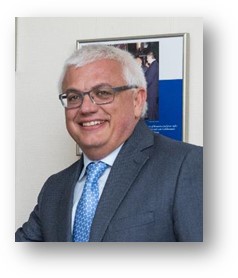Engineering challenges in future particle accelerators for High Energy physics
LECTURER

Roberto Losito
ABSTRACT
The CERN complex of accelerators delivers beams of charged particles to a variety of Experiments. The flagship programme is around the Large Hadron Collider, a 27 km long accelerator in which beams of proton or heavy ions are brought into collision inside large detectors to investigate the microscopic nature of matter. After the discovery of the Higgs Boson announced in 2012, the European community of particle physics has given its preference concerning the future project towards the construction of an even larger electron (e-)-positron(e+) accelerator or, as an alternative, an e+-e-linear collider or a muon collider. Several challenges will need to be addressed, related not only to engineering and technology, but also to the size and timeline of such projects, and I will present in this talk some of the most intriguing difficulties that the designers are trying to solve to ensure their feasibility.
SHORT BIOGRAPHY
Roberto Losito is an RF Engineer at CERN since 1995. He was in charge of the assembly and test of the last superconducting RF modules of the Large Electron-Positron Collider (LEP) and of the entire production of superconducting cavities of the Large Hadron Collider (LHC). He was then involved in the development of the CTF3 photoinjector (an electron source based on lasers and photocathodes), of real time controls systems. He became group leader of the Sources, Targets and Interactions Group at the end of 2007 until 2015. He launched or managed several programmes through the group, including the refurbishment of the CNGS facility, several upgrades of LHC collimators, consolidation and renewal of the nTOF and AD targets and target areas, several upgrades of the ISOLDE facility, the UA9 programme in the CERN SPS and LHC accelerators to demonstrate the feasibility of collimation based on bent crystals in hadron colliders, and gathered in his group all available expertise in telemanipulation and robotics, in order to efficiently and professionally develop robotic solutions for intervention in radioactive or harsh environments. He was also at the origin of the Radiation To Electronics (R2E) programme to consolidate LHC controls in order to cope with radiation in the accelerator tunnels and service galleries. R2E is now a consolidated activity having setup monitoring and testing infrastructures that allows the accelerator community to safely design and test control electronics based on Custom Off the Shelf (COTS) components for use in the radiation environment (accelerators and aerospace). From 2016 to 2020 he was the head of the Engineering Department, counting 700 people among staff, students and associates, providing engineering expertise and support in all areas of engineering at CERN (electricity, mechanics, HVAC, handling etc…). Since January 2021 he is the Coordinator of R&D on accelerator technologies in the Future Circular Collider (FCC) study, and collaborates with the Muon Collider Study in particular for proposals on technology R&D and test facilities. He is presently a member of the INFN Machine Advisory Committee.



